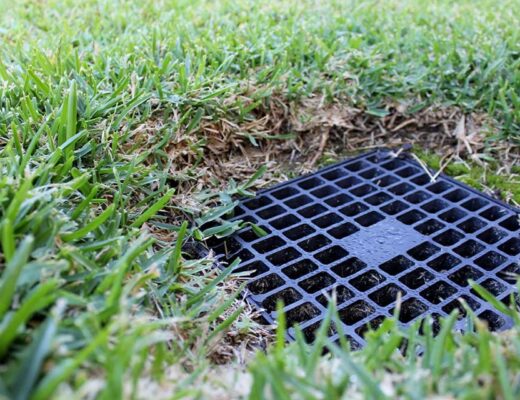Key Takeaways:
- Explore sprinkler systems’ critical components and operations to support a vibrant lawn.
- Implement practical water conservation techniques and learn the impact of innovative technology on lawn irrigation.
- Understand seasonal adjustments, maintenance practices, and troubleshooting tips to keep your system functional year-round.
Introduction To Sprinkler Systems
Maintaining your sprinkler system ensures your lawn stays healthy and green. To achieve lush greenery, you need to find a trusted sprinkler repair service provider in Idaho Falls who can help you with the intricacies of your sprinkler system.
Many different sprinkler systems are available, each suited to different lawn sizes, shapes, and types of plants. Choosing a system that meets your unique outdoor space requirements is crucial. One-size-fits-all solutions don’t exist when it comes to lawn maintenance.
Planning & Installing Your Sprinkler System
When it comes to sprinkler repair Idaho Falls, it’s essential to remember that a successful repair job involves more than just fixing any issues with the system. It’s also about understanding the specific needs of your landscape and ensuring that the sprinkler system is functioning seamlessly to meet those needs. To set up a successful sprinkler system, you need to plan carefully and consider various factors such as soil type, the layout of the land, and the water needs of your plants. Considering these factors, you can optimize your sprinkler system and deliver the proper water to keep your lawn and garden healthy.
Installing a sprinkler system is a multilayered process that might seem daunting to beginners. It entails spatial strategizing, plumbing proficiency, and some landscaping savvy. A professional installation is an excellent option for homeowners who want a hands-off approach or lack time. It is an effective and convenient choice, especially for those who may be mechanically inclined but still prefer to avoid the DIY route.
Common Sprinkler System Components & Their Functions
Let’s dive into the anatomy of a sprinkler system, a constellation of several essential elements. At the forefront are the sprinkler heads, which come in many guises, from stationary to rotating, each tailored for specific parts of your garden. Underground, an elaborate network of valves controls the water flow to each zone, acting as gatekeepers to hydration. Sitting atop this hierarchical structure is the brain of the operation: the controller. This component orchestrates the timing and duration of watering sessions, often allowing for customization to local weather conditions and water conservation efforts.
For those times when a system goes awry, it’s invaluable to have a rudimentary grasp of its components, especially if you’re the hands-on type who likes tackling minor repairs without calling in the cavalry. In instances requiring advanced sprinkler repair or maintenance, this basic understanding can facilitate more informed discussions with professionals, ensuring your system receives the best care possible.
Water Conservation Strategies For Sprinkler Systems
Conserving water while caring for your lawn isn’t just a financial consideration; it’s a responsibility we all share. Adjusting sprinklers to avoid the pavement and focusing on thirsty turf is a start. The timing of irrigation cycles is another crucial factor: watering during the more excellent early morning or late evening hours minimizes evaporation. As the EPA recommends, intelligent scheduling considers grass type, season, and weather conditions. Skipping watering during wet spells and increasing watering during drought can be helpful. Cycle and soaking techniques can prevent runoff and improve soil absorption. Modern controllers allow efficient watering scheduling.
Seasonal Lawn Care With Sprinkler Systems
To keep your sprinkler system in top shape, it’s essential to consider the changes each season brings. For autumn, winterize your setup to avoid any frost damage. In spring, inspect your system for any necessary repairs or damage. These proactive steps can minimize the need for extensive sprinkler repair and maintain a beautiful lawn year after year.
Troubleshooting Common Sprinkler System Issues
Lawn irrigation disruptions can arise from leaks, pressure imbalances, or clogs. Regularly checking for wet spots, dry patches, or malfunctioning sprinkler heads can prevent significant disruptions. Fixing simple issues like blockages or worn washers is easy. However, complex problems like backflow failure or valve leaks require professional help from a reliable sprinkler repair specialist. Qualified technicians have the expertise to promptly diagnose and resolve issues, minimizing downtime and preventing harm to your lawn’s ecosystem.
The Role Of Smart Technology In Sprinkler Systems
Sprinkler systems now feature controllers that use real-time weather forecasts to adjust watering schedules innovatively. These advancements promote sustainable gardening practices, allowing technology and nature to work harmoniously. Smartphone connectivity and rain sensors provide hands-off yet fully controlled lawn maintenance, which is essential in today’s climate-conscious society.
Sprinkler System Maintenance Checklist
Ensure a healthy lawn by regularly inspecting your sprinkler system for leaks, and damaged sprinkler heads, and cleaning filters. Seek professional help once a year to identify any issues. Following a maintenance schedule can adjust watering zones, save water, and improve your lawn’s health. Regular maintenance and timely repairs can safeguard your investment in the system and ensure its longevity.







No Comments